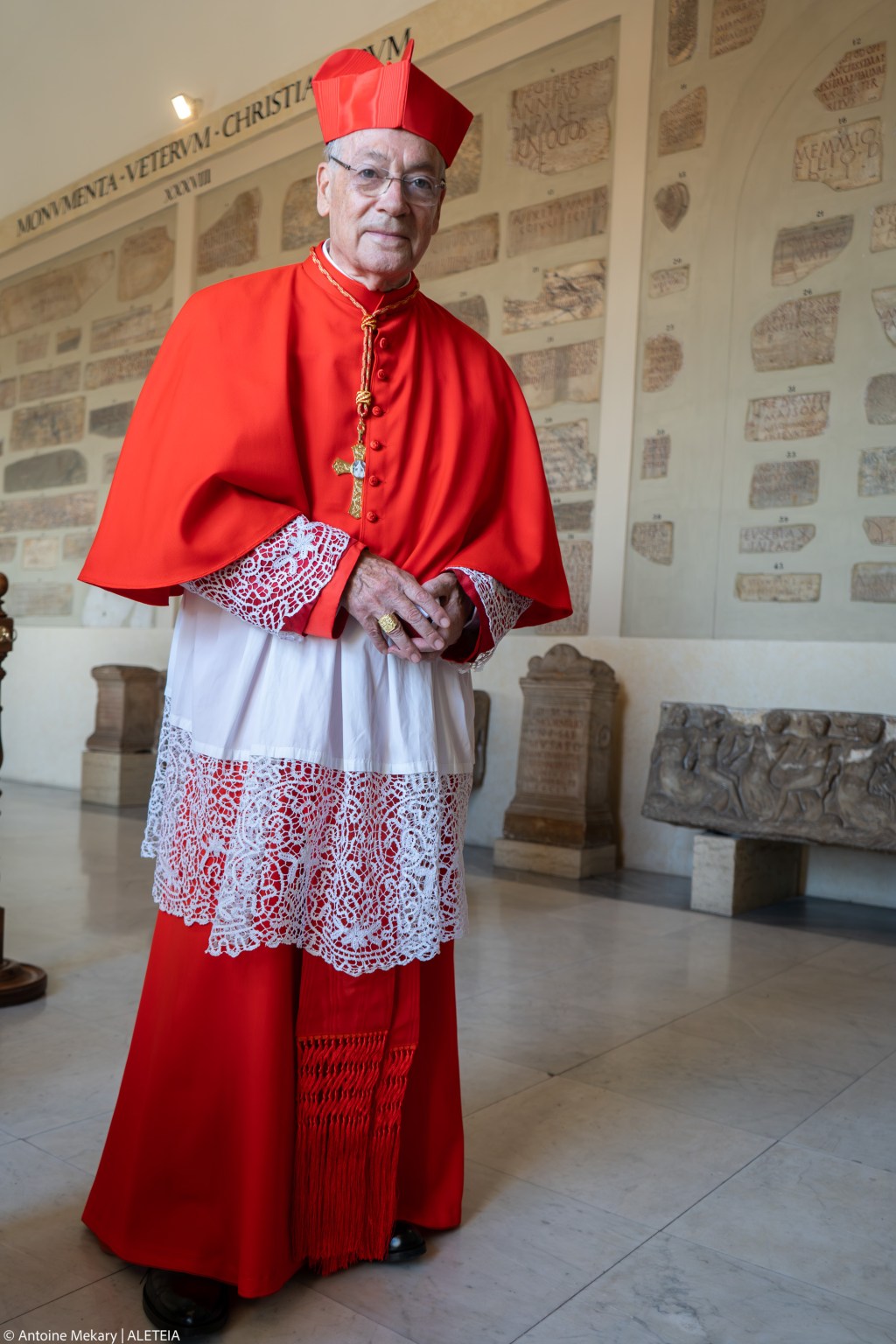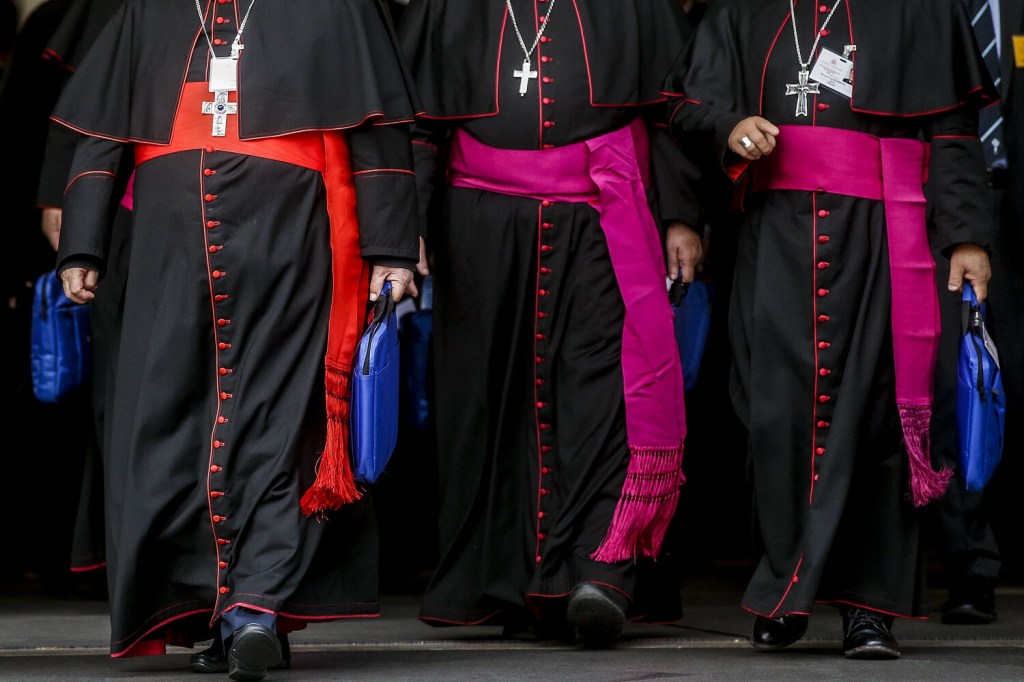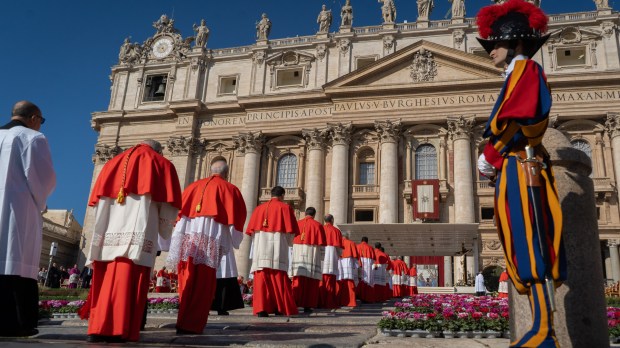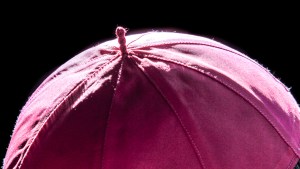On September 30, 2023, Pope Francis created 21 new cardinals for the Catholic Church, 18 of whom are electors in case of a conclave. In the weeks leading up to important events of this kind, religious clothing and accessories stores around the Vatican see cardinals, bishops and priests passing through, buying what they need to prepare for the occasion, or to bring Roman wares back home.
One of the most popular stores is Mancinelli Clero, on Borgo Pio, just a minute from the Vatican’s St. Anne’s Gate. Since 1962, Raniero Mancinelli and his family have been supplying popes, cardinals, and all other members of the clergy with the clothes and accessories they need.
I.MEDIA visited the store to find out just what goes into this holy garb.

Liturgical attire: mozzetta, rochet, cassock, and biretta
“When there’s a consistory for the creation of cardinals, they must get a black cassock bordered with the red color of a cardinal, and a red cassock and shoulder cape. These are the three main and indispensable items,” explains Raniero Mancinelli.
The red cassock and the shoulder cape (mozzetta), together with the rochet (loose white linen vestment bordered with lace) and biretta (the square hat), make up the attire worn by cardinals for the most important liturgies and ceremonies, such as consistories and conclaves.
Red — more specifically, scarlet — is the main color of the uniform, as it must “represent the blood of Christ” and the blood that cardinals must be ready to shed in the service of the Church, explains the tailor. All elements of the uniform are made from wool or light wool. It takes a week to create them. And they “are always and exclusively made to measure,” emphasizes Mancinelli.

How they are worn
The ceremonial cassock is a long, heel-length scarlet robe worn under the other items. In fact, only the lower part is visible. It also includes a sash, also scarlet, worn around the waist. “The buttons on the cassock should number 33, to represent the years of Christ’s life. But fewer are used today, for reasons of speed and convenience of buttoning,” says the pope’s tailor.
The cassock is covered by the rochet, a white garment with lace trim. “The lace is made according to personal taste. In the past, we only made them by hand, but today they are also machine-made,” he explains.
“With Francis’ pontificate, prelates want to spend less, and therefore want things to be cheaper. It’s also a question of practicality, as handmade lace is also more delicate to maintain over time,” he adds.
Finally, on top of the rochet is the mozzetta, a short scarlet cape that reaches down to the elbows. It usually has 9 or 10 buttons. Around their neck, bishops and cardinals wear their pectoral cross. For cardinals, it’s fitted with a red and gold cord or metal chain. During a consistory, cardinals also receive a cardinal’s ring, representing communion with the See of Peter.
On their head, cardinals wear a biretta, a square hat with rigid flaps, and underneath, the zucchetto, a small round hat. Traditionally, the pope also wears this cap, known by its Italian name “zucchetto,” but in a white version instead of the red of the cardinals. At Mancinelli’s, before the consistory, numerous zucchettos were prepared with the cardinals’ names inscribed inside. These were taken to the Vatican, and during the ceremony the Pope placed the biretta on the head of each new cardinal.
Different colors reveal what kind of clergy they are
The other uniform mentioned by Raniero Mancinelli as essential for new cardinals is the black cassock with scarlet details. This cassock is used for ordinary activities and is worn by all bishops and cardinals. “The borders, the piping, are what distinguish the different categories of prelates,” explains the tailor.
The black cassock with amaranth red piping (a reddish purple similar to fuchsia) is for non-cardinal bishops. Their liturgical dress is the same as that of cardinals, but this specific color substitutes scarlet. Bishops also wear a pectoral cross, which may be fitted with a green and gold cord or chain.

Priests who hold the title of “Monsignor” but who are not bishops wear a black cassock with purple details, called a “paonazzo,” while ordinary priests wear a completely black cassock. In Rome, the only prelate who wears white is the pope. He also wears a zucchetto, a simple mozzetta, and a cassock with a gold-tipped sash. During the consistory liturgy, the pontiff also wears a miter and a golden cape.



